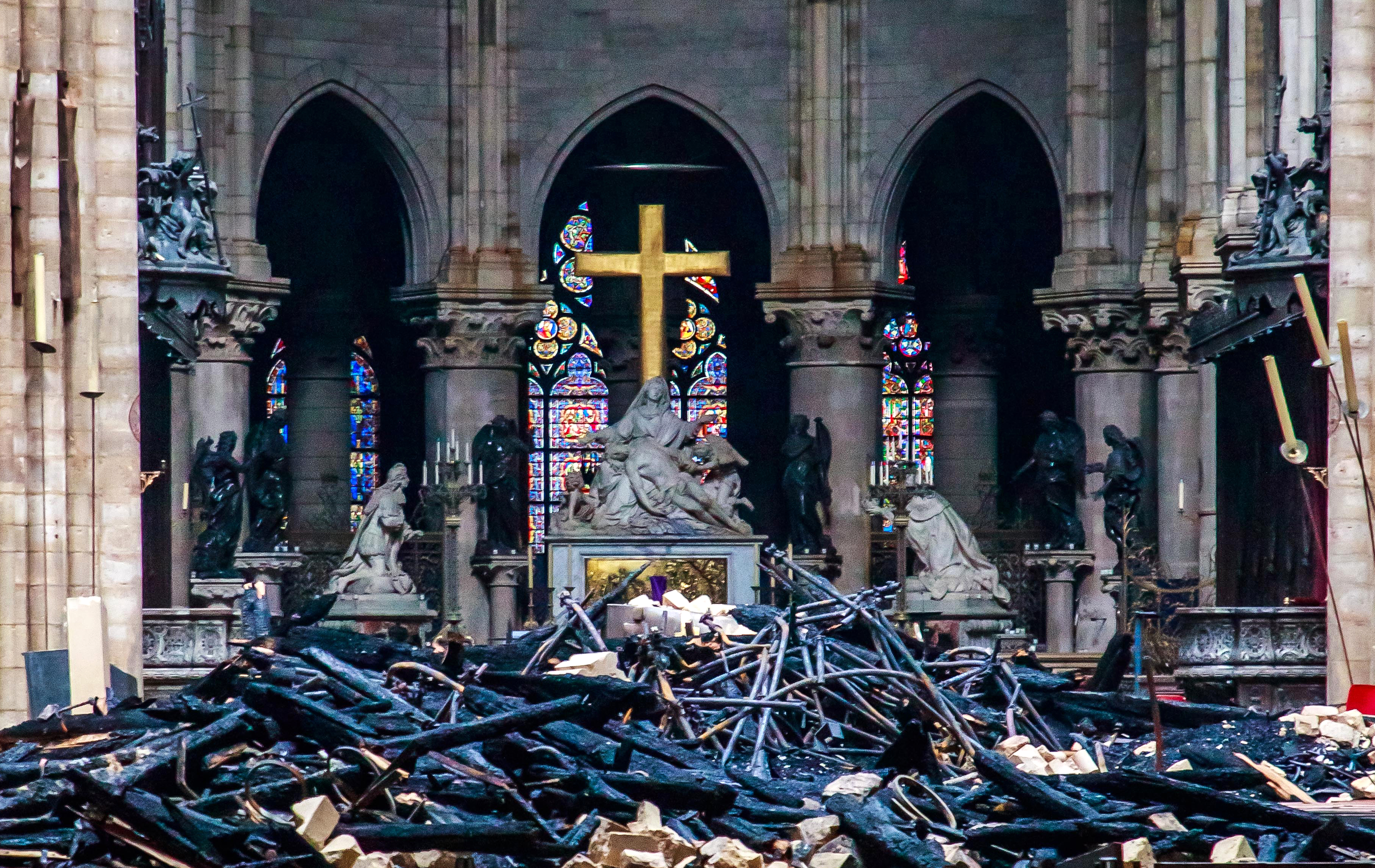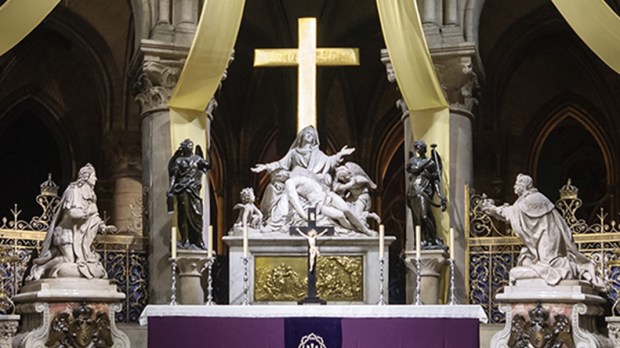Lenten Campaign 2025
This content is free of charge, as are all our articles.
Support us with a donation that is tax-deductible and enable us to continue to reach millions of readers.
For decades, a sculpture of the Blessed Virgin Mary holding her crucified son had dominated the high altar of Paris’ Notre Dame Cathedral. But the cross from which Jesus had just been taken down in this Pieta scene had to exist only in the imagination of the devout.
Then, in 1994, a sculptor named Marc Couturier won a competition to design a cross to be installed above that scene. And the gold cross, which does not have the figure of Christ hanging on it, has been at the center of attention for a week now, surviving the devastating fire in Notre Dame.
“I’m still relieved,” Couturier said in an interview with France Bleu. “I was not too worried because I knew architecture protected [the cross]. The vault and pillars that make up the choir are very solid, as is the triforium. But I did not think it would shine so much; it’s very strange. Because it is not illuminated, the light emanates from the cross, it is very curious. This is not magic, she simply did her duty: she shone in the night and in the chaos, thanks to her gold leaf and her form, because she is as if puffed from the inside.”

According to an online biography, Couturier was born in Mirebeau-sur-Bèze in Côte d’Or in 1946. He lives and works in Paris:
He first made a name for himself through his work on “Levitating Rivercraft,” and it was in the early 1990s that the concept of “Redressement” came to him: under this term, he grouped together a series of works (called Acheiropoieta in Ancient Greek, i.e. not made by human hand), whose form is providentially evocative of easily identifiable figures and landscapes. He reveals them to us without altering them. A Japanese laurel leaf becomes a stained-glass window, a piece of plasterboard becomes a “Redressement,” a stroll through Amiens gives rise to “stone cabochons”—a virtual “Redressement” of architectural elements—a curved face of a tun, found in a wine storeroom in Portugal, forms a primitive sculpture, and the presentation and illumination of fragments of the curved face in “teatrini” (puppet theatres) become a series of landscape snapshots … At the same time, he develops works made by human hand that spark contemplation or whisk us away on other journeys: Obeche “strips” covered in gold leaf are displayed, as if suspended, on walls (“Formes simples” exhibition, Centre Pompidou Metz, June 2014); the “Drawings of the third day” in lead pencil on paper or pure graphite on immense wall drawings (Musée de la Chasse et de la Nature, 2012 / Palais de Tokyo, “Inside” exhibition, Oct-Nov. 2014) hark back to the creation in Genesis; the silverpoint drawings on prepared canvas or in the form of wall drawings (MUDAM, Luxembourg / “Traces du Sacré” exhibition at the Centre Pompidou, 2008) and most recently, his pastels. Marc Couturier’s work is showcased in a range of prestigious public and private collections. He has designed stained-glass windows for Saint-Léger Church in Oisilly (Côte-d’Or), a cross and halo for the chancel of Notre-Dame Cathedral in Paris, the altar of Saint-Denis du Saint-Sacrement Church in the Marais district in Paris and the work “Tremblement de ciel” (Skyquake). …
Couturier responded to the call for designs for the cross that Cardinal Jean-Marie Lustiger, Archbishop of Paris, issued in a state-run competition.
“I carved it myself,” he told France Bleu. “It’s made of flame-retardant wood, called samba, which I always use for my sculptures, and then it’s covered with gold leaf, which is resplendent.”
He said that while he was working on the sculpture, he spent a lot of nights in the cathedral, which he described as “very mysterious as a place.”
“Sometimes the organist came around 2 a.m. and played a terrible force,” he recalled. “It’s a little magical, supernatural.”

